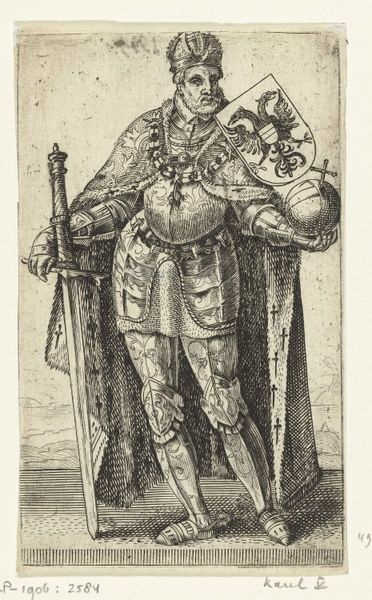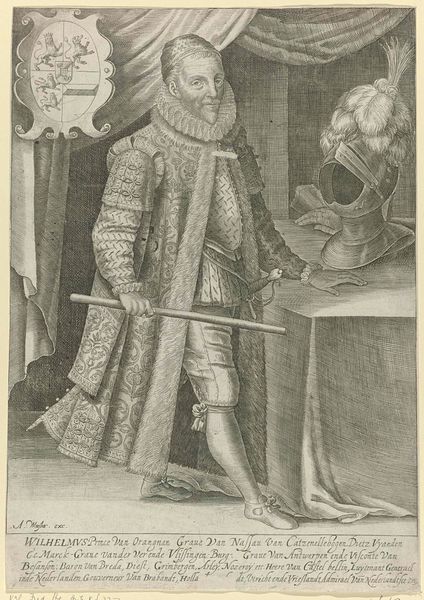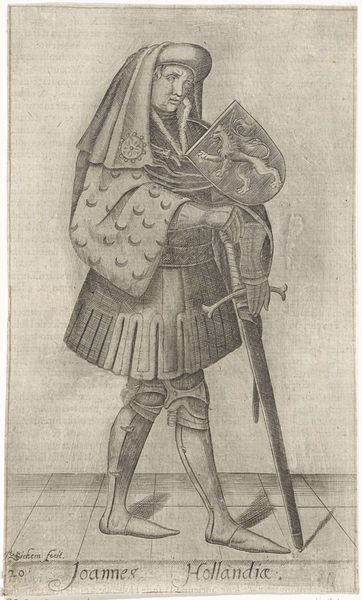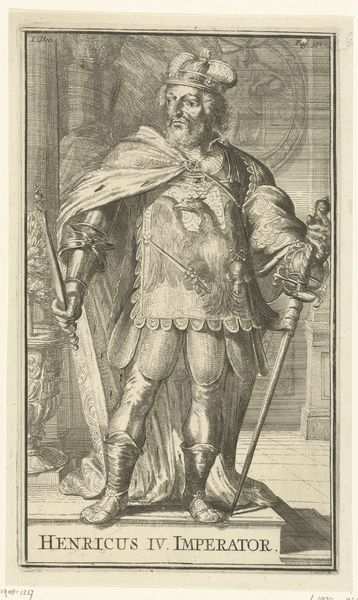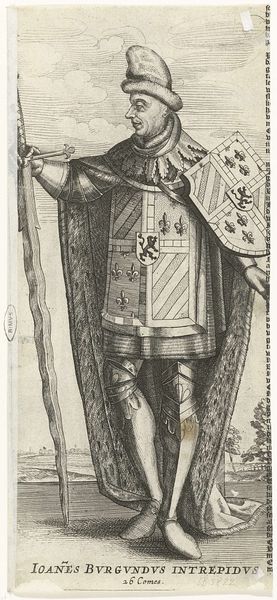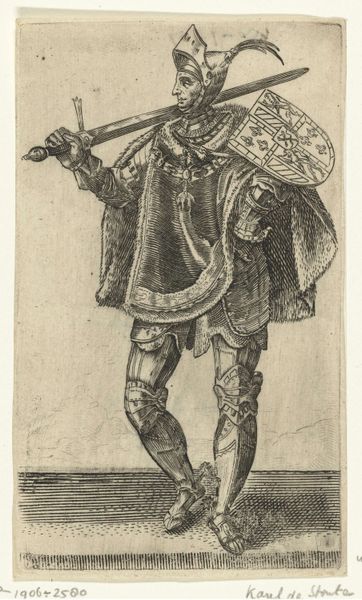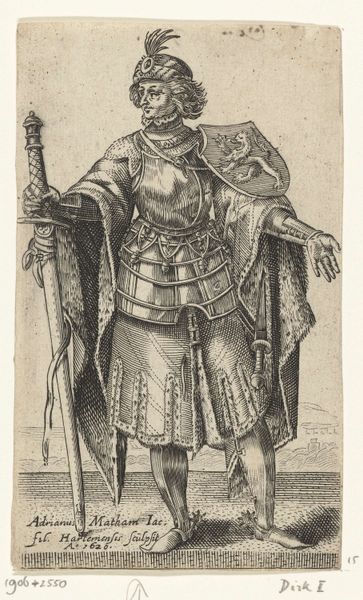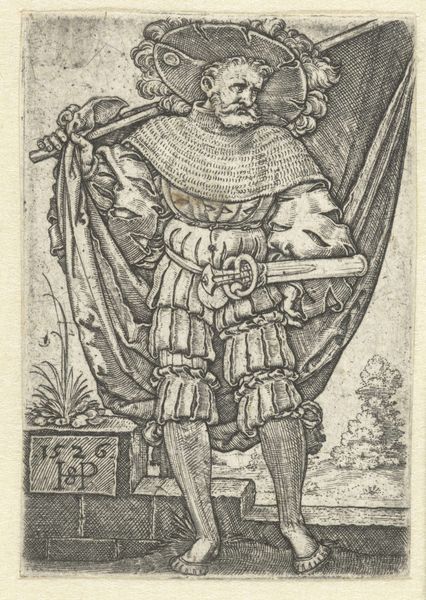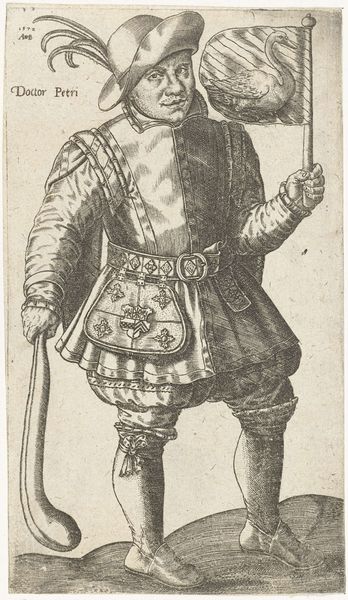
print, engraving
#
portrait
#
baroque
# print
#
history-painting
#
engraving
Dimensions: height 268 mm, width 159 mm
Copyright: Rijks Museum: Open Domain
This is Romeyn de Hooghe’s portrait of Jan Beukelsz van Leiden, made using etching. The image presents us with a man who was a key figure in the Anabaptist movement, which advocated for radical social reforms in the 16th century. Jan van Leiden became the leader of the Münster Rebellion, a theocratic regime in the German city of Münster, during which time he declared himself King. De Hooghe's print is striking for its complex depiction of power. Van Leiden is adorned with the symbols of kingship, but it's important to remember that these symbols also carry the weight of the rebellion’s ultimate failure, and his subsequent execution. The artist seems to ask: what does it mean to claim divine authority, and what are the consequences of such a claim? The image evokes complicated ideas around faith, power, and the consequences of religious extremism. It serves as a reminder of the human capacity for both radical change and destructive zeal.
Comments
No comments
Be the first to comment and join the conversation on the ultimate creative platform.

